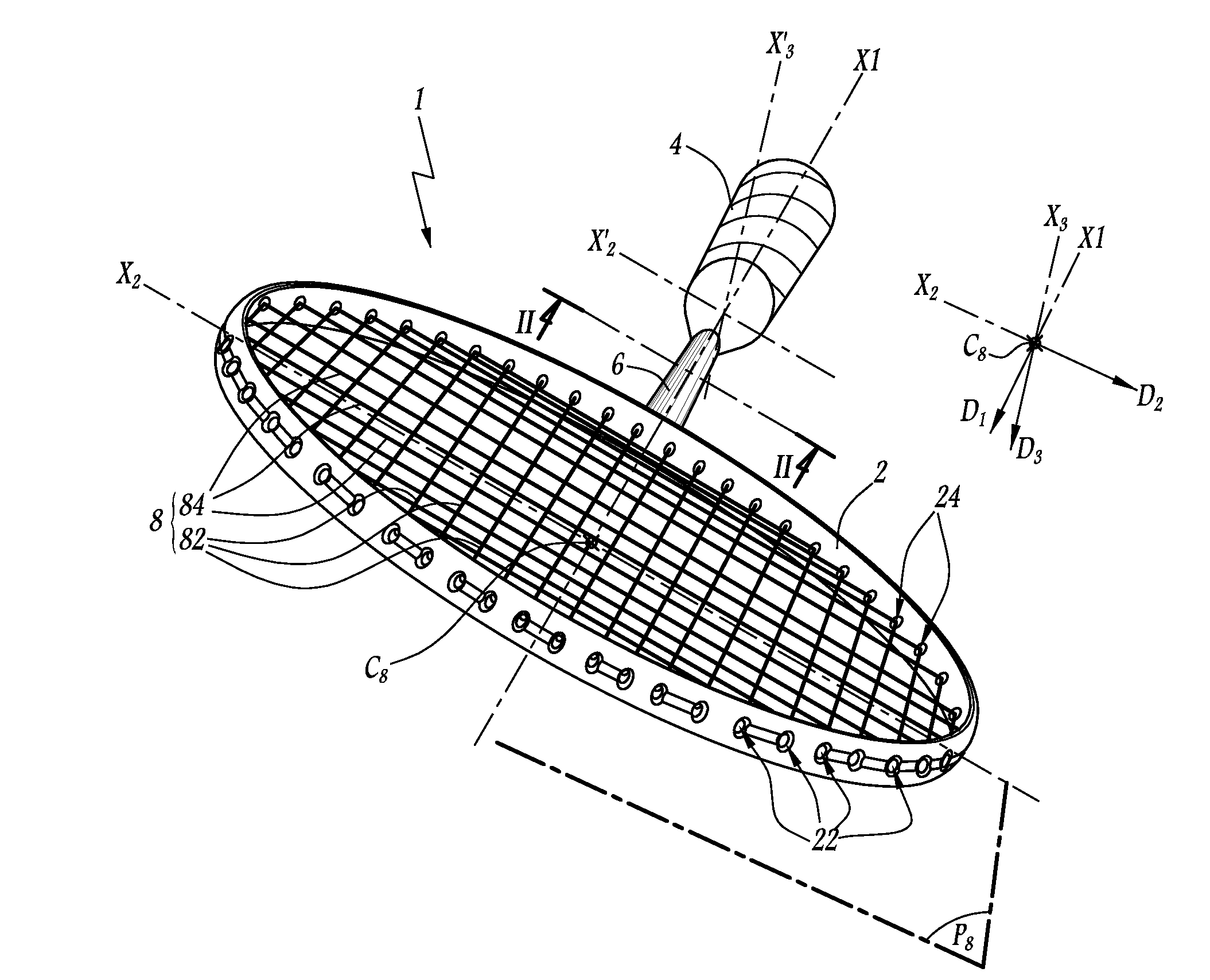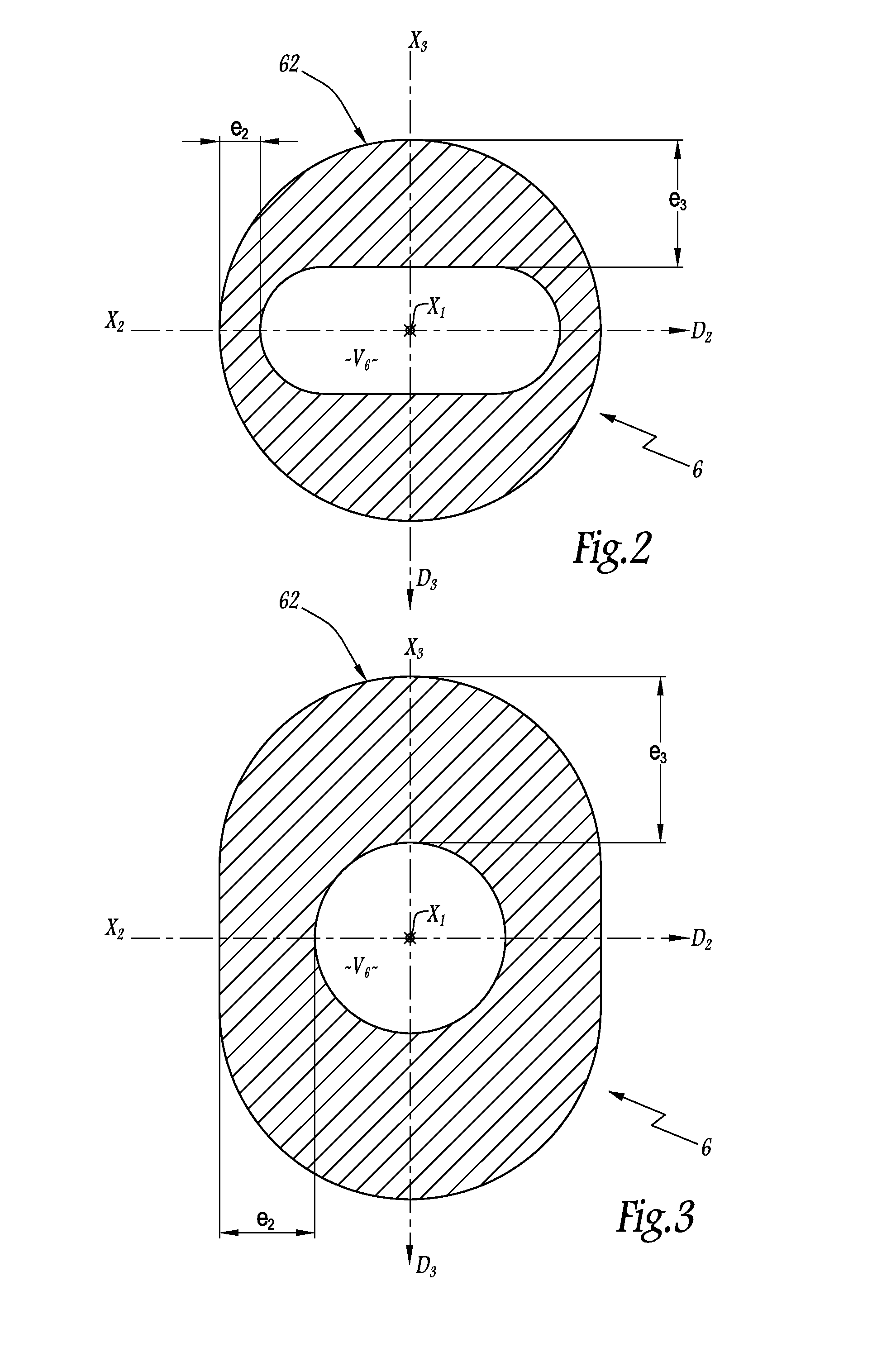Badminton racket
a technology of badminton rackets and rackets, applied in the field of badminton rackets, can solve problems such as precision flaws of rackets, and achieve the effects of reducing bending rigidity and improving torsional stability of rackets
- Summary
- Abstract
- Description
- Claims
- Application Information
AI Technical Summary
Benefits of technology
Problems solved by technology
Method used
Image
Examples
second embodiment
[0036]In the second embodiment, the outer radial surface 62 of the shaft 6 has a non-circular section, in this case oval, with its largest dimension oriented along the direction D3. The volume V6 has a circular section. Thus, the wall thickness e2 of the shaft 6 in direction D2 is smaller than the wall thickness e3 in direction D3.
third embodiment
[0037]In the third embodiment, the outer radial surface 62 of the shaft 6 has a circular section as well as volume V6. Two reinforcements 64 are integrated into the shaft 6 and extend near the surface 62, i.e., on the outside thereof, while being aligned in direction D3.
[0038]These reinforcements 64 may be produced by bands containing carbon fibers, optionally impregnated with resin, with a carbon fiber density that varies based on the desired difference in rigidity. Thus, the elements 64 make it possible to reinforce the bending rigidity of the shaft 6 locally, in direction D3, since they are aligned in that direction.
[0039]In direction D2, the reinforcements 64 have little impact on the bending behavior of the shaft 6, since they are subject to displacements, and therefore stresses lower than those to which they are subjected during bending along D3.
first embodiment
[0040]The invention is not limited to the described embodiments. Thus, the volume D6 of the first embodiment may have a section other than oval, for example polygonal. Likewise, the surface 62 may have a section other than oval in FIG. 3, for example polygonal.
[0041]The orientation of the directions D1, D2 and D3 along the axes X1, X2 and X3 is given as an example and may be reversed.
[0042]According to one alternative not shown, the reinforcements 64 may also be affixed to the inside of the shaft.
[0043]The features of the embodiments and alternatives considered above may be combined with each other.
PUM
 Login to View More
Login to View More Abstract
Description
Claims
Application Information
 Login to View More
Login to View More - R&D
- Intellectual Property
- Life Sciences
- Materials
- Tech Scout
- Unparalleled Data Quality
- Higher Quality Content
- 60% Fewer Hallucinations
Browse by: Latest US Patents, China's latest patents, Technical Efficacy Thesaurus, Application Domain, Technology Topic, Popular Technical Reports.
© 2025 PatSnap. All rights reserved.Legal|Privacy policy|Modern Slavery Act Transparency Statement|Sitemap|About US| Contact US: help@patsnap.com



